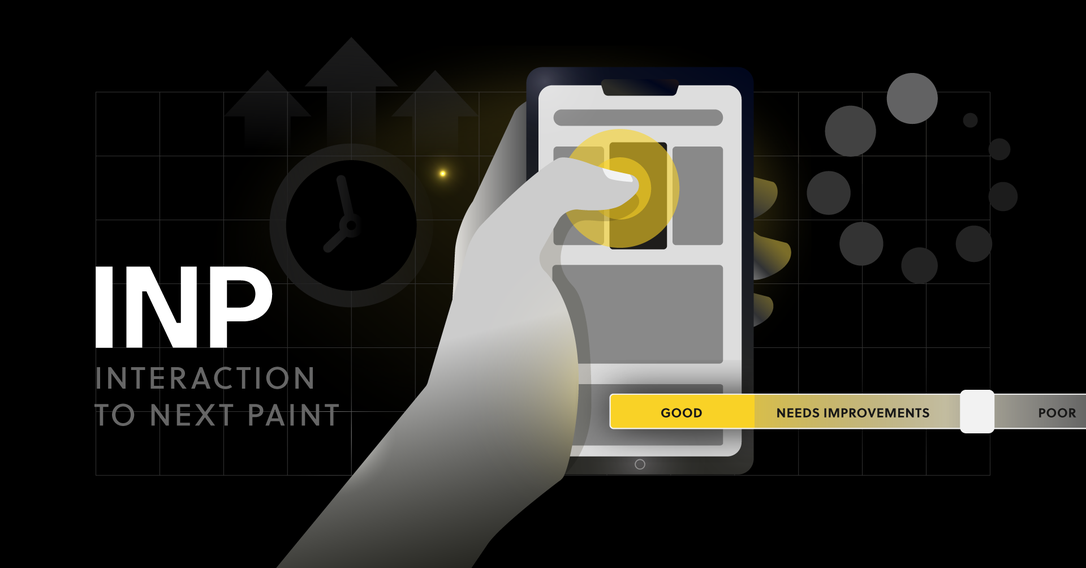12 min
July 31, 2023
How often should you update your site's UI?
If you have doubts about whether a user interface once created will be good enough for many years to come, you're probably right. In this article, we'll tell you what the consequences of not redesigning your site can be and why updating the UI regularly is important!
Not updating your website can have negative consequences for both your business and your users.
Listen to the audio version of this article.
5 compelling reasons why regular UI updates are essential
Adaptation to new trends
Technologies and user expectations and needs are constantly changing. If your UI remains unchanged for a long time, it may not meet new demands for visuals, functionality and usability. Updating the UI allows your site to be up-to-date and attractive to users.
Improving the user experience
UI is crucial in creating a pleasant and convenient user experience. By regularly updating the UI, you can improve users' interaction with your site, make it more intuitive and easy to use. This, in turn, impacts user satisfaction, increases engagement and the chances of completing the purchase process and repeat visits.
Maintaining competitiveness
The virtual space is full of sites competing for users' attention and money. If your UI is not updated, your site may look outdated and not attract enough users. Updating your UI allows you to stand out from the competition by creating a fresh and attractive image.
Improving performance
An outdated UI can negatively affect your site's performance. Old UI elements can slow down page loading, degrade user interaction and cause problems. Updating the UI allows you to optimize your site's performance, creating fast and responsive websites that achieve high rankings in search results.
Improving performance
An outdated UI can negatively affect your site's performance. Old UI elements can slow down page loading, degrade user interaction and cause problems. Updating the UI allows you to optimize your site's performance, creating fast and responsive websites that achieve high rankings in search results.
User interface (UI) redesign is crucial for e-commerce industry
Improving the shopping experience
UI redesign creates a more intuitive, easy-to-navigate, functional and user-friendly interface for users. A convenient and attractive shopping experience is crucial to the success of an online store. By updating the UI, users can quickly find the products they want, move smoothly through the ordering process and easily make payments, resulting in increased conversion and customer loyalty.
Conversion optimization
UI redesign can help optimize the conversion process, that is, turning visitors into customers. Improving page layout, item placement, order forms and "buy now" buttons can significantly increase conversion rates. A good UI can also provide relevant shopping prompts and suggestions, which can encourage customers to add more products to their shopping cart and increase order value.
Personalization and recommendations
UI redesign can help optimize the conversion process, that is, turning visitors into customers. Improving page layout, item placement, order forms and "buy now" buttons can significantly increase conversion rates. A good UI can also provide relevant shopping prompts and suggestions, which can encourage customers to add more products to their shopping cart and increase order value.
Improved payment process
UI is crucial to the payment process, which is often a critical moment in e-commerce. Facilitating payments, removing unnecessary steps, ensuring transaction security and providing an intuitive interface can significantly impact conversion and customer trust in an online store.
Strengthening the brand
UI is crucial to the payment process, which is often a critical moment in e-commerce. Facilitating payments, removing unnecessary steps, ensuring transaction security and providing an intuitive interface can significantly impact conversion and customer trust in an online store.
Adaptation to mobile devices
UI is crucial to the payment process, which is often a critical moment in e-commerce. Facilitating payments, removing unnecessary steps, ensuring transaction security and providing an intuitive interface can significantly impact conversion and customer trust in an online store.
What does it take to update a website's UI?
Updating the user interface on a website or online store is a complex and multi-step process that requires planning, creativity and attention to detail. But you can always turn to the professionals. Beecommerce offers audit and redesign services.
Analysis and user research
Understanding user needs and expectations is key. Conduct research, analyze statistics, and gather user feedback to better understand what changes are needed and what aspects of the UI can be improved. Conducting research is a key element in understanding user needs and expectations. There are many methods that can be used to gather information and feedback from users.
Analyzing statistics can also provide valuable information. This can include analyzing interface usage data, such as the number of users, time spent on the site, average number of pages visited, etc. This data can help identify areas that need improvement and confirm which elements are already effective.
Gathering user feedback can also be a valuable tool.
All of these aspects of research and analysis are key to improving the user interface and meeting user expectations. With a full understanding of what users need and expect, changes can be made accordingly.
Competitor and trend research
Analyze the competition and study their UI design. Pay attention to modern design trends to make your UI look modern and meet user expectations. However, remember that it is important to maintain the uniqueness of your brand and design. To analyze your competitors and see their UI designs, there are several steps you can follow:
Identify the main competitors in the market. You can do this by researching the market and finding similar companies or apps that offer similar products or services.
Visit your competitors' websites or mobile apps. Look closely at their UI designs and pay attention to elements such as layout, colors, typography, icons and animations. Make notes on features you like and that seem modern and intuitive.
Compare competitors' UI designs with design trends. You can do this by looking at blogs, articles or websites dedicated to the topic. Pay attention to popular styles, designs and interactions that are currently trending. Examples include minimalism, flat design, set designs, color gradients, microinteractions, parallax effects, etc.
Find a unique perspective for your UI design. Based on your analysis of competitors and design trends, think about how you can introduce original elements into your UI. It could be a choice of different colors, an unusual layout, original icons or a completely different perspective on the interface structure.
Combine modern trends with your brand's unique style. It's important to remain consistent with your brand's visual identity, even when incorporating modern elements into your UI design. Research the color palette, fonts and other details that represent your brand, and integrate them into the UI design.
Planning and concept creation
Determine the goals and target audience for the updated UI. Develop a design concept, including color scheme, typography, element layout and overall style. Make sure the new UI is consistent with your brand identity and supports your marketing strategies.
Objectives:
Improve usability: the main goal of the UI update is to improve the functionality and ease of use of the product. We want to create an intuitive interface that allows users to easily navigate and use the app's features.
Improving the visual experience: we want to introduce a modern, fresh and aesthetically pleasing design that will be visually appealing to users and attract new users to our app.
Brand compatibility: the new UI should be consistent with the brand's identity, values and mission. We want users to feel like they are part of our brand and inspired by our style.
Target group:
Identify your target audience. Analyze analytics data to determine your customer profile.
Design concept:
Color scheme: We'll choose clean, modern colors that are pleasing to the eye, while also matching our brand. We'll focus on combinations of bright and pastel colors that bring calm and harmony.
Typography: we will choose one well-read, simple and modern font that will blend well with our logo and remain consistent with the brand. We will provide different font sizes for different sections of the app to improve readability.
Element layout: We will use a simple and concise layout that will allow users to quickly recognize and access the app's features. We will use rectangular internal boxes and ensure intuitive navigation.
Overall style: We will create a minimalist and elegant style
Creating a design and prototype
Based on the concept developed, create a design and prototype of the new UI. The design will give you a visual representation of what the pages of your website or online store will look like after the update. The prototype will allow you to test the functionality and user interaction with the new UI before its actual implementation.
To create a design and prototype of the new UI for your website or online store, you can follow the following plan:
1. Define the project goals: Determine what benefits and goals you want to achieve with the UI update. Do you want to increase conversion, improve navigation, increase user trust, etc.?
2. Conduct a user survey: Find out how current users use the website or online store and what their preferences are. This can be done by analyzing analytical data, conducting surveys or direct observation.
3 Create a UI concept: Based on the information collected, create a concept for the new UI. It must take into account the needs and preferences of users and the goals of the project.
4. Make a graphic design: proceed to create a graphic design of the new UI. This can be done using graphic design tools, such as Photoshop, or Adobe XD. Make sure the design is consistent in terms of colors, typography and layout.
5. Create a prototype: Using prototyping tools such as InVision, Figma or Adobe XD, create a clickable prototype of the new UI. It should allow users to test the functionality and interaction with the new UI.
6. Test the prototype: Ask users or testers to test the prototype and share their feedback. You can also collect analytics from the prototype to find out what UI elements are most effective.
7. Refine the prototype: Based on user feedback or analytics data, make improvements to the prototype. It's worth testing different UI variations to find the optimal solution.
8. Make implementation: After finalizing the design and prototype, proceed to implement the new UI on the website or store .
Implementation
Once the design and prototype are approved, begin the process of designing the new UI. Work includes creating new design elements, introducing new functionality, and updating and optimizing existing elements. Consult with experienced designers and developers to ensure high quality and compliance with modern design standards.
Testing and optimization
After implementing the new UI, conduct testing to check its functionality, interaction and compliance with user expectations. Gathering user feedback and taking it into account helps you make necessary adjustments and optimizations. Gradually implement the new UI on your website or online store to ensure a smooth transition and minimize negative impact on users.
Summary
It’s worth updating your UI every 3–5 years to keep up with new trends, technologies, and user expectations.
Decisions about redesign should be based on signals such as declining conversion rates, negative feedback, and industry innovations.
Refreshing the UI isn’t just about a new look—it’s also about improving functionality, intuitiveness, and user experience.
Working with experts allows you to quickly implement effective, modern solutions that support your company’s growth.





